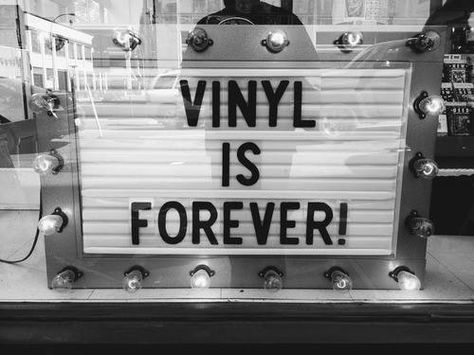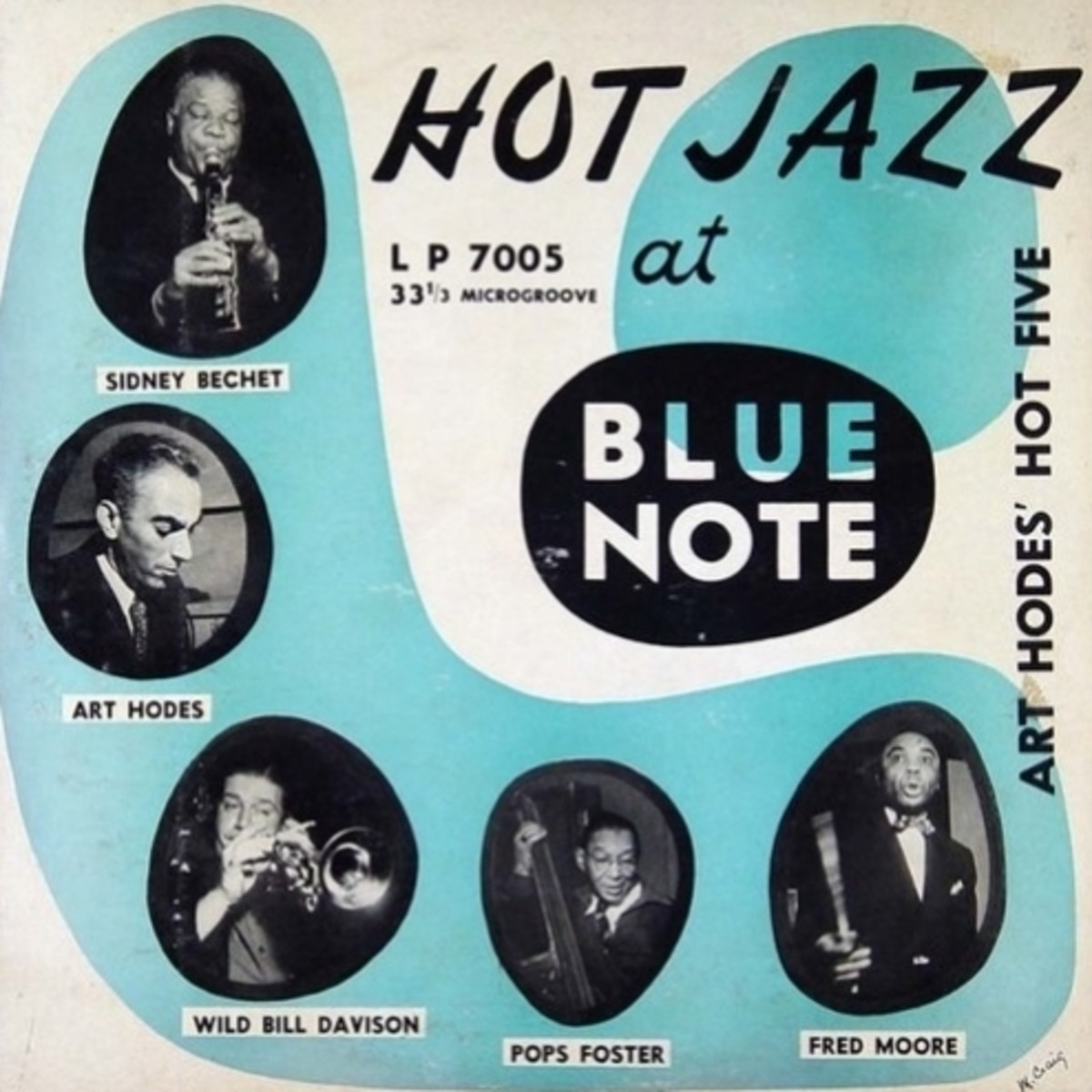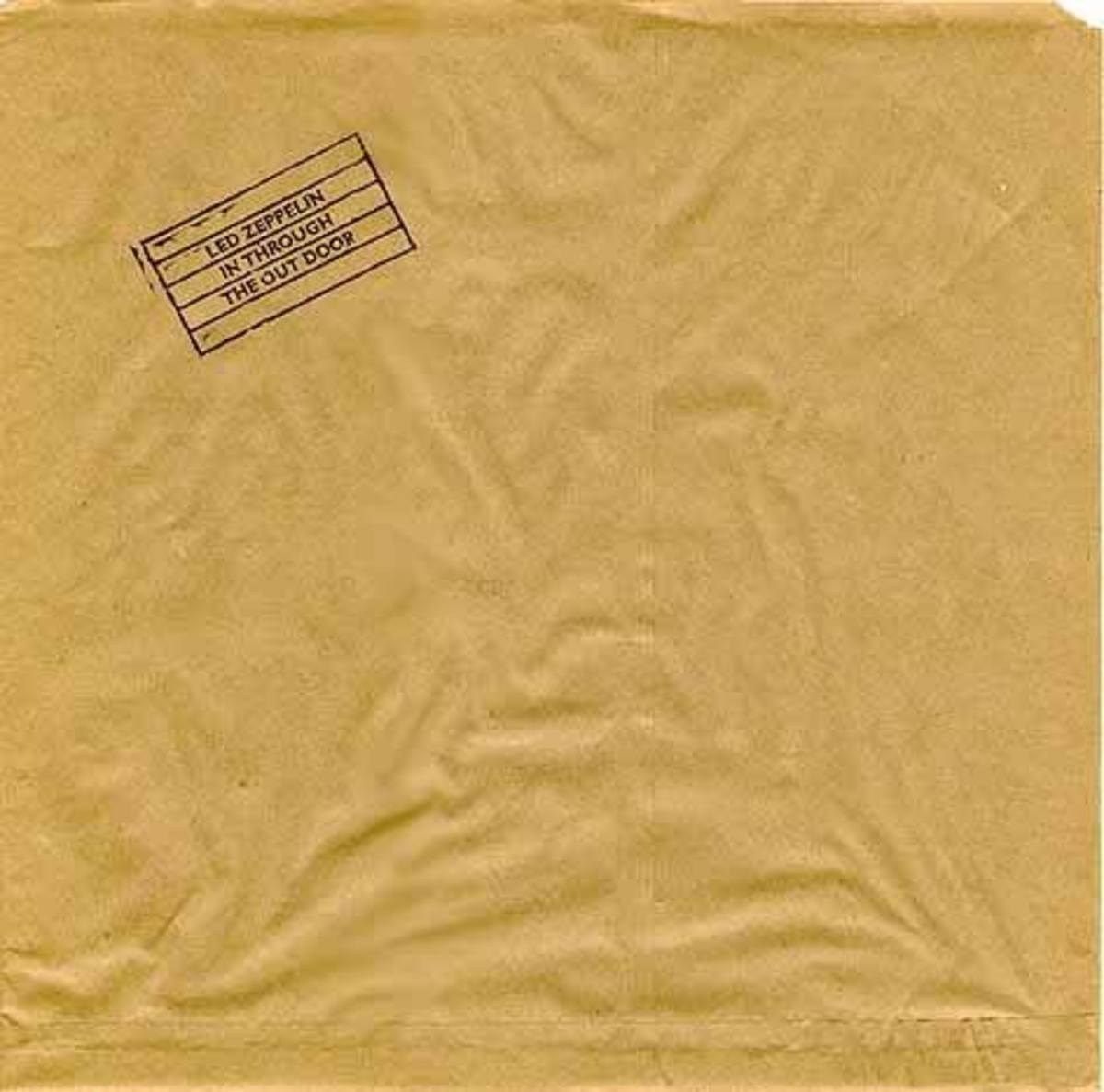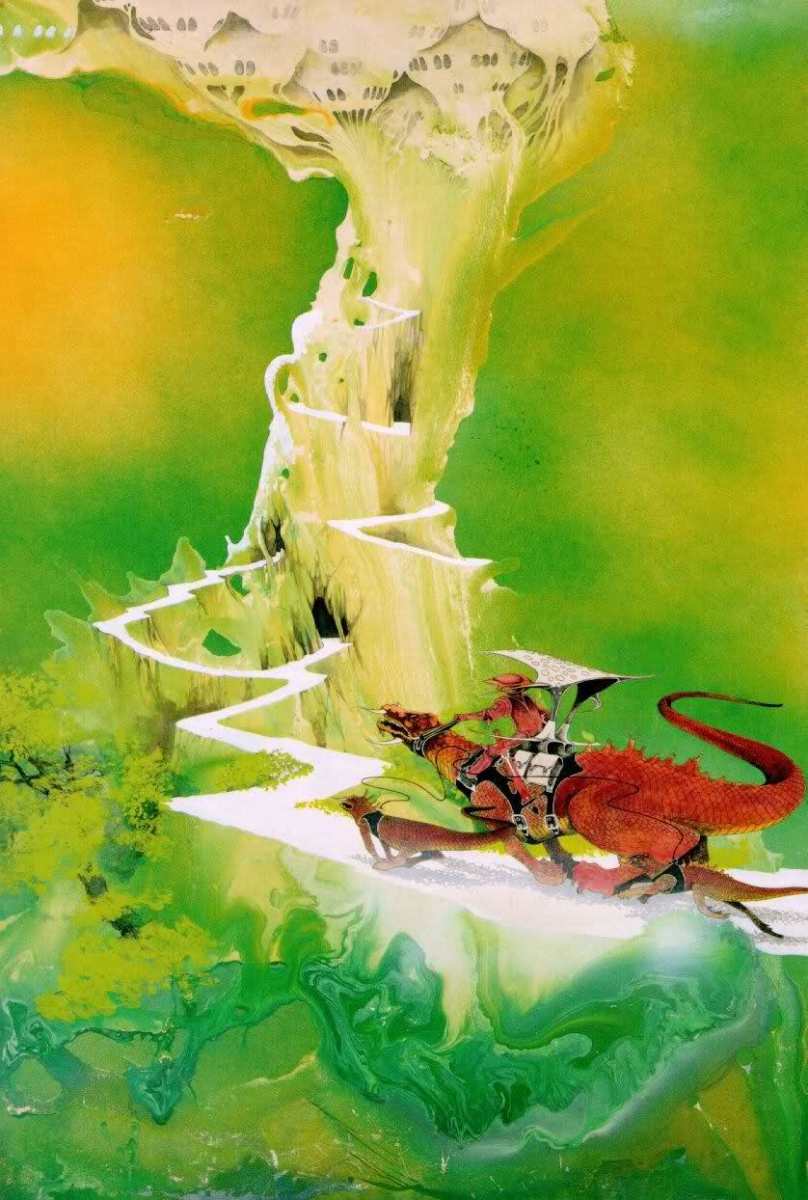The Return Of Vinyl: Is It A Fad, Or Here To Stay?
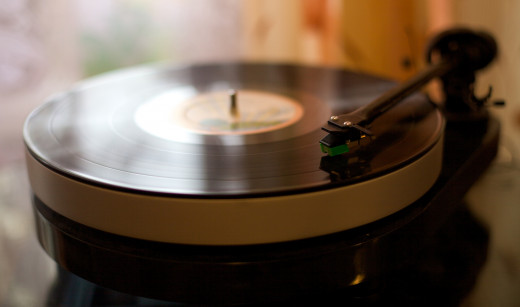
Don't Call It A Comeback
Depending on who you ask, you'll get a different answer to the question, "When did vinyl die?"
"If vinyl died at a certain time, you could say it was either in the late-'80s — when the music medium suffered its first massive blow — or the mid-'00s, when it reached its nadir." - Spin.com
The truth is, it never really died - it gave way to the current demands of the industry.
"When they think vinyl was 'dead' in the '90s, they're overlooking the fact that at that point CD jukeboxes were still a new thing," Jay Millar told Billboard. "The seven-inch vinyl jukebox was [still] huge. And from my time working at labels at that point, I always had stacks of 12-inch singles behind my desk. Most radio stations were using 12-inch singles, every birthday party DJ, every roller rink, every discotheque, and record stores in general."
In other words, the vinyl single was king, not the LP - a distinction most are unaware of. Fortunately, sales of 12" vinyl singles carried the format well into the 21st century thanks to the popularization of electronic music and the 'glamorous' DJ profession, before plateauing in 2009.
"The vinyl single stayed as high as 7.5 million through 1997, only bottoming out at 300,000 in 2009, a number it would repeat in 2010, and, indeed, last year."
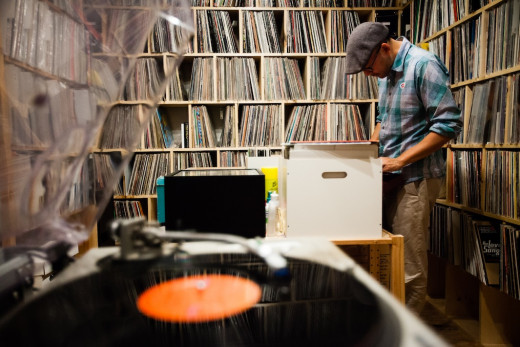
In 2013, sales of vinyl records rose to over 6 million, up from 4.6 million in 2012. Record Store Day, which happens twice a year, is responsible for the biggest selling day in vinyl's history (April 19, 2014).
Naturally, sales of record players and turntables have also increased.
“We’ve seen sales of turntables rise right along with record sales,” says Liz Braun, vice president of sales and marketing at Crosley, the Louisville, Kentucky based manufacturer of a broad array of turntables. The company, which also sells jukeboxes, radios and headphones, has seen double-digit sales growth in its turntable sector the past several years, says Ms. Braun. “Just about every model is seeing a surge in popularity and that mirrors the rise in popularity of vinyl records.” - ABC.com
Record labels are releasing more music on vinyl, including major releases that have MP3, CD, and vinyl versions.
“As more record labels release popular music on vinyl and turntable designs become even more accessible the marketplace will only grow,” adds Ms Braun. “We see the sector only gaining strength.”
Teens and young adults born after CDs were invented are heavily responsible for the current resurgence, as well as adults who are old enough to remember vinyl's golden age of success.
We can also thank Hollywood for keeping vinyl relevant, by featuring records and turntables in TV shows and films more often than we might realize (and even commercials). Currently, Amazon.com's exclusive dramatic series Bosch heavily features jazz music, records and a vintage turntable.
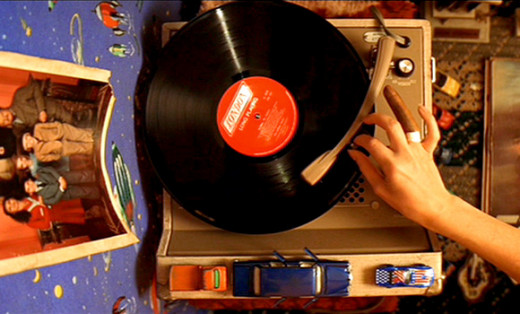

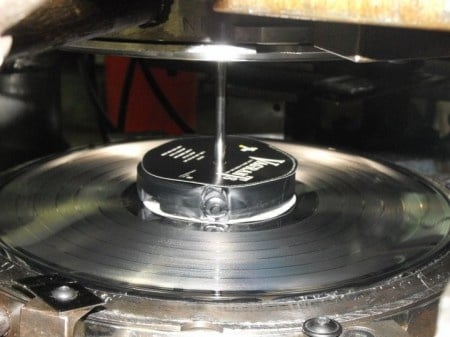
What Exactly IS Vinyl?
Vinyl records are made from a flexible form of polyvinyl chloride (PVC).
The PVC bricks used to make records resemble hockey pucks, and are pressed in powerful hydraulic machines (with steam to soften the vinyl) between a set of stampers that are created from a master recording.
Instead of steam-activated bricks, some pressing facilities will mix their own globs of piping hot vinyl to place between the stampers.
Most vinyl records are made from black PVC, but colored vinyl is becoming increasingly popular for a variety of reasons.
Watch the video below to gain a new appreciation for this wonderfully unique format.
How It's Made - Vinyl Records

The Vinyl Spectrum
Due to the expense and demand of the flexible PVC required to make vinyl records, some manufacturers employ the use of recycled black vinyl. In order to recycle vinyl, the label must be first be removed.
Bits of paper and glue sometimes survive this process and can seriously affect the playability of albums made with recycled vinyl. Unfortunately, it can be difficult to determine who is using recycled vinyl and who isn't.
Some manufacturers will denote that their vinyl is virgin (pure) with a sticker that is placed on the shrink wrap of a new LP, or will have a reputation for using high quality materials in their pressings (such as, Music On Vinyl and Blue Note).
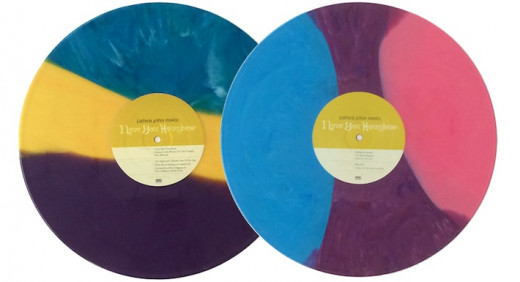
Which brings us to the wonderful world of colored vinyl. As you may have deduced, colored vinyl is 100% virgin. It is also becoming highly collectible due to its limited nature.
Labels will often release a limited edition, colored variant of an album (usually 500 - 2,000) as its first pressing, then switch to black vinyl for subsequent pressings. This also helps generate pre-orders and sales for 'online only' releases and reissues.
Primus Cooks Up Some Colored Vinyl
However, some take issue with colored vinyl....
"Custom color options are the center of a debate among listeners, musicians, and engineers that claim colored wax sounds different than a standard black pressing. It may be that the process of adding a colorant to the raw material negatively affects sound reproduction, but definitive evidence is hard to come by. Personal preference is the best opinion to take. I prefer high-quality standard pressings with no frills, but then again, if a limited edition is available I often buy both." - Nina Ulloa
I own both high quality 180g black vinyl pressings and colored vinyl variants, and let me assure you that they all sound great. Only the choosiest of audiophiles will take issue with this detail.
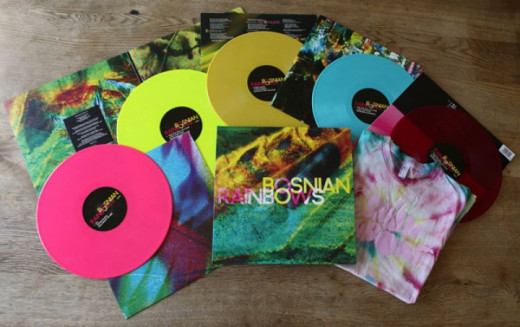
Finally, we arrive at the picture disc, which is exactly what it sounds like - a piece of paper with artwork that is pressed between two globs of clear vinyl.
As you may have guessed, this paper can affect the sound quality of the record, especially older picture discs. Fortunately, modern day picture discs are thicker and sound much better than their ancestors.

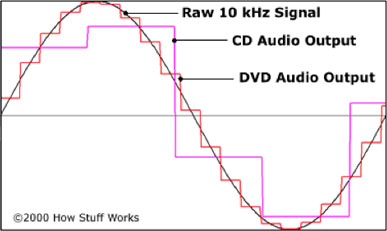
Analog vs. Digital
The purists among us will loudly and proudly declare that vinyl pressed from analog master recordings are wholly superior to those mastered from digital sources.
You can see in the diagram to the right that the 10kHz analog signal is a perfect wave, versus the imperfect CD and DVD audio waveforms. This means that an analog vinyl recording will capture a 'perfect' representation of the sound, while a digital recording simply cannot.
Most modern records are pressed from digital CD masters, unless otherwise specified on the shrink wrap's sticker (or printed on the jacket), meaning audiophiles tend to turn their noses at these issues (even digitally remastered classics like Led Zeppelin and The Beatles).
For those of us who have grown up with digital music, this distinction probably won't matter. A high quality pressing, regardless of the master's origin, is going to sound phenomenal on a quality system, with few exceptions.
"There's the act of putting a record on, there is the comforting surface noise, there is the fact that LPs are beautiful objects and CDs have always looked like plastic office supplies. So enjoying what an LP has to offer is in no way contingent on convincing yourself that they necessarily sound better than CDs." - Mark Richardson
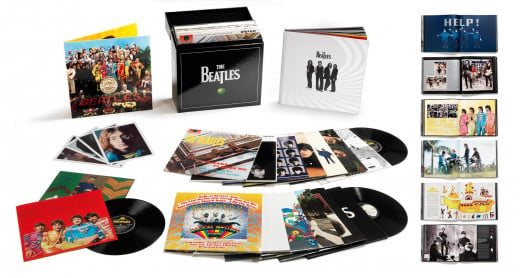
However, even with the highest quality materials, vinyl recordings are always considered imperfect. Flaws in the vinyl, the pressing and even the packaging can influence the playability of these records.
Deep surface abrasions, dirt and dust can cause popping, clicking and distortion. Static discharge can occur while a record plays, which can also cause these disturbances.
Cleanliness is next to godliness, especially where vinyl is concerned. Learn how to handle your records without leaving fingerprints (thumb against the side of the album, while balancing the label on your fingers) and clean your albums before each play.
You can use a soft, damp towel (followed by a soft, dry towel), a simple brush and cleaner set, or the more expensive Spin-Clean system to keep your albums clean. Whatever you do, make sure you clean your records in a circular motion, along the grooves. Otherwise you risk permanently damaging your records!

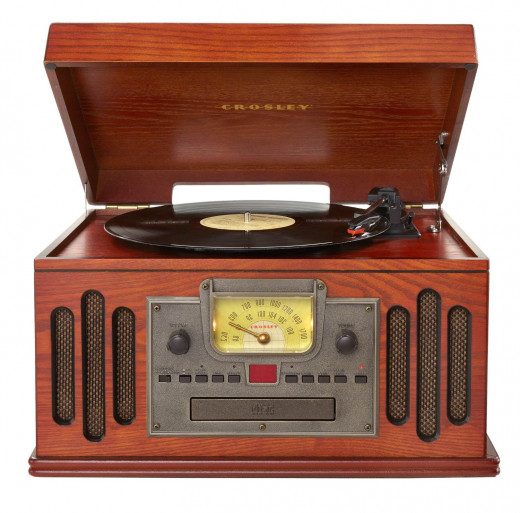
Turntable vs. Record Player
There is a definite distinction between the 'record player' and the 'turntable'.
A turntable is exactly what it sounds like: a turning table (platter) that the record is placed on. A pickup device (cartridge and stylus attached to a tone arm) fits into the record groove and reads the analog information, which sends a small electrical signal to the preamp or receiver before being amplified through headphones or speakers.
Record players, however, are generally thought of as portable turntables with a built-in amplifier and speakers.
Quite simply, if you need additional peripherals to achieve sound, you've got a turntable on your hands. If your device is a stand alone unit, you are in possession of a record player.
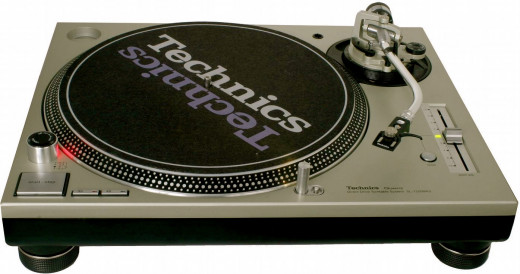
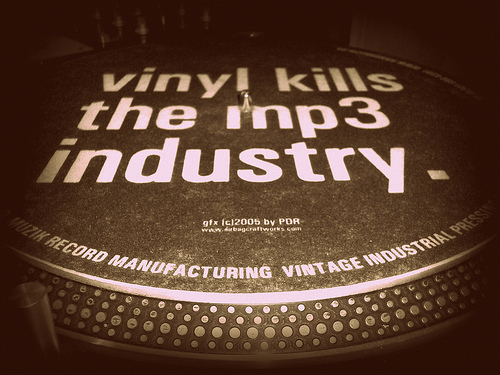
There are two main types of turntables: belt-drive and direct-drive.
Belt-drive turntables are able to use less expensive motors, which are located off-center from the platter, and are connected by a drive belt made of elastomeric material. This belt helps eliminate much of the distortion caused by the motor's vibration.
Direct-drive turntable motors are directly connected to the platter, and centered underneath. Most modern turntables are direct-drive, and DJs must use them in order to manipulate the record. These powerful motors can cause a a lot of vibration - fortunately, most modern direct-drive tables are created with shock-absorbing materials, but the best way to eliminate disruptive vibration is to use a quality slipmat.
Vintage, belt-driven turntables perform just as well as modern direct-drive tables, if not better. You really can't go wrong with either style, but always remember - you get what you pay for. A $100 record player is going to eat your records (cheap materials and no counterweight), whereas a $500+ turntable, receiver and speakers will assuredly give you an optimal audio experience.
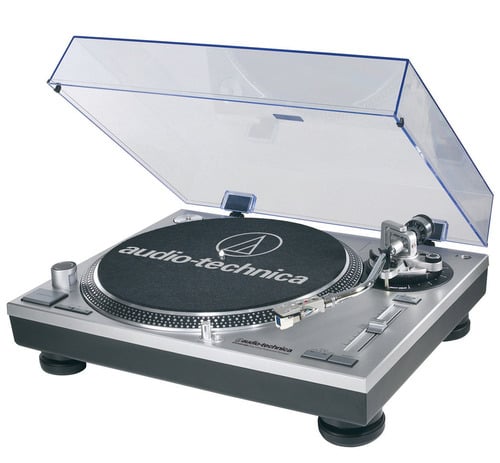

The Bottom Line
Vinyl is only growing in demand, and most pressing plants have 3-5 month waiting lists. There are a finite number of record presses in the world, and nobody's making new ones. As a result, when a modern day record goes out of print, prices will begin to skyrocket until a reissue is pressed.
Most albums released by major artists made before the 90s are still in print today. This allows new collectors the ability to pick up a vintage copy for cheap, or pony up for a sealed reissue that may or may not be remastered.
Naturally, many LPs that never received vinyl issues in the 90s are getting remastered and pressed as quickly as possible. Get yours before they go out of print!
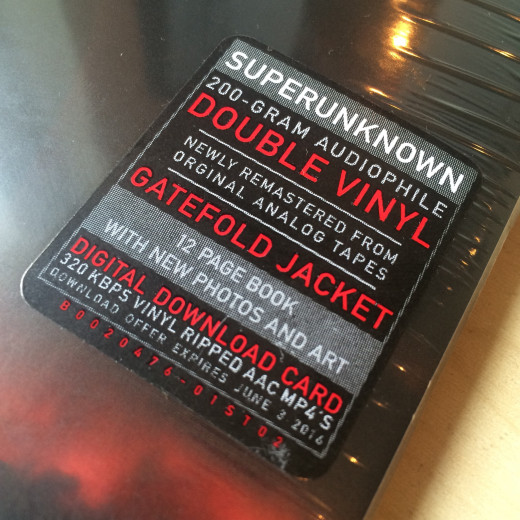
Albums from indie artists can also be pricey, due to limited print runs - especially when they are imports.
Speaking of imports, US music labels will sometimes hire foreign pressing plants to help ease their own workload - this invariably raises the price of repressings.
Fortunately, the internet has plenty of resources for collectors to discover and access vinyl from all over the world.
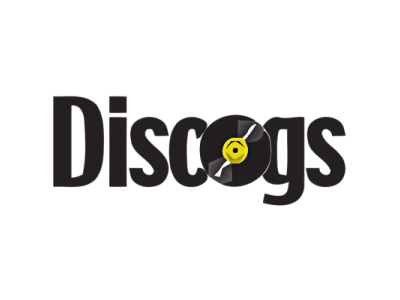
Discogs
Discogs is the largest online database of audio information concerning commercial, promotional, bootleg and off-label releases (electronic and vinyl).
The website is owned by Zink Media, Inc. and located in Portland, Oregon. Users are constantly adding information to the repository, which contains more releases than the English-language Wiki pages.
Registered users can catalog their music collection and create Wantlists, as well as buy and sell their albums (complete with price tracking - Low, Median & Highest). If you are a collector, do yourself a favor and register today.
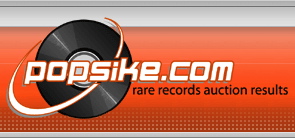
Popsike & Collector's Frenzy
Collector's Frenzy and Popsike are two of the most popular resources for vinyl collectors.
Quite simply, these sites track and store auction information from eBay concerning vinyl record sales.
If you want to know what you should pay for a record, or how much your own wax is worth, look no further.
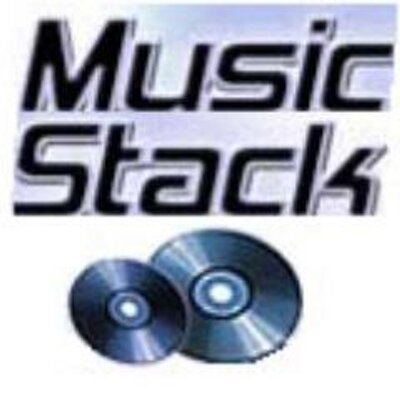
MusicStack
MusicStack specializes in helping music lovers locate rare vinyl records, used CDs and hard to find music from thousands of online record stores.
With millions of out of print vinyl records MusicStack makes it easy to track down the lost record albums, LPs and 45s you have been searching for.

Are you ready to start collecting vinyl?
Check out these online retailers and distributors for collectible, high-quality vinyl of all kinds.
While it may be a fad for some, vinyl isn't going away any time soon. Record collecting is a fun way to support your favorite artists, and arguably the best way to experience music. Vinyl is both sturdy and fragile - take special care of your records and they will bring you joy for years to come!
